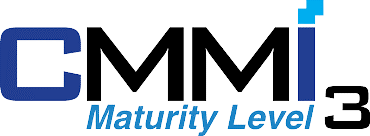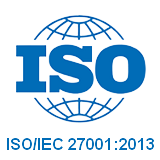In the context of continuous economic fluctuations, business not only faced with the pressure growth, but also to ensure efficient operation safe financially. A lot of organizations fall into a state of loss, shortage, cash flow or miss an investment opportunity only because of the lack of a “map” financial clarity. Therefore, financial planning business is no longer selected exclusively for large corporations, which have become management platform core that every business, whether any scale, also need to build.
A financial plan, it not only helps businesses know where he is, but more importantly, know where I'm going, going any way and need, and what resources to achieve that goal. This article Lac Viet Computing will help you to understand the concept of financial planning what is the composition of value to bring as well as how to build a financial planning practice effective for your business.
1. Overview of the financial planning business
1.1 financial Planning what is?
Financial planning business is the planning process overall cash flow, revenues, expenses, profits and capital to ensure the operation of the business was constant and effective consistent with the development of medium – long term. In other words, this is clearly defined steps the business will use the money how, how much capital, where to invest, and when to adjust to reach your financial goals.
Unlike accounting – capital recorded transactions have occurred, financial planning towards the future. Help business “look-ahead” the financial scenario from which active decisions, operating cost, investment, capital and profit. A financial plan, it will help the business determine the financial resources required to achieve business goals, take strategic decisions about investment, market expansion, and manage cash flow effectively.
For example easy to understand: If the business wants to open a branch in the 3rd quarter of financial planning will help forecast:
- How much cost the initial investment?
- Profit expectations after 6 months of operation, is how much?
- Have enough cash flow to operate the branch current no?
- Have the need to call additional capital or cut costs in other parts do not?
When there are clear answers to these questions, the business is not only a fast decision more accurate, but also reduce the financial risk incurred in addition to the expected.
Distinguish financial planning with financial management daily
| Financial planning | Financial management daily |
|
|
1.2 The factors that affect financial planning
The situation macroeconomic
- Inflation can reduce the value of currency, affects the purchasing power of customers.
- Fluctuations in interest rates impact the cost of borrowed funds, financial strategy of the business.
- Tax policy can affect profitable strategy, investment plans and capital structure.
Capital needs and funding sources
- Businesses need to evaluate the possibility of raising capital from equity capital, bank loans, issuance of stock or capital invested.
- The selection of the loan rate reasonable help optimize financial costs that do not increase the burden of debt.
Financial risk and how to control
- Exchange rate fluctuations may affect export sales, or cost of imported raw materials.
- Liquidity risk: If the business does not control the flow of money, good may fall into the situation of not enough capital to maintain operations.
- Interest expense: If the business has too much debt on the loan with high interest rates, profits can be seriously affected.
- 9 Accounting Software online cheap cost reduction for small and medium ENTERPRISES
- 10+ accounting software ERP admin most popular AI for enterprises
- Financial management business – core Skills to help businesses grow sustainably
- Financial management what is a business? In principle, the role and optimal solutions for modern enterprise
2. Why financial planning is the cornerstone survival of the business numbers?
In the context of business fluctuations, a financial plan, clear, flexible, no longer is the choice that is mandatory conditions for enterprises to survive sustainable development. However, as practice shows, many businesses – especially the small and medium enterprises still operate based on feelings or personal experience of the head, a financial strategy, it.
Consequence of not having financial planning what is apparent? Businesses can fall into such situations:
- Expanding too fast when not enough cash flow leads to fracture of finance.
- Operating costs increase without control plan specific.
- No forecast is the time of shortage of capital, resulting in a loan to pay the high interest rate.
- Miss investment opportunities just because there are no resources prepared from before.
Financial planning is the process of building a “map” the overall financial for business, which clearly defines:
- Business will earn how much money?
- Will cost how much?
- Cash flow operating how much need to maintain stability?
- When to invest, when to narrowing or risk reserve?
When the continuous market changes, customer behavior, volatility, escalating costs, the ability to react flexibly on finance becomes more and more important. According to a survey by PwC, more than 61 percent of business plan financial flexibility for know they maintain stable operation, fast recovery during and after the period of crisis as a pandemic, economic fluctuations, or fracture of the supply chain.
This shows that: financial Planning is not just accounting tool, which is the core capability of the modern enterprise. It helps the business in the right direction, decisions based on data, and actively advance the financial scenario different – from growth to risk prevention.
And most important, a system of financial planning effective and will help businesses always in control of the money now, need to, have to be ready for anything in the short term or long term. It is the foundation to build a sustainable business, growth control.
3. The important component in the financial planning business
A financial planning effectively can't just stop at the aggregate end of the period. To truly support the management in operating strategy, financial planning should be built from many component parts closely associated with each other. Each component acts as a “link” in the chain master plan, to help business owners control the resources, flexible response and decision-making at the right time.
Here are 5 core components in a system planning, comprehensive financial:
3.1. Plan cash flow – platform make sure the ability to operate continuously
Cash flow (cash flow) is the source of life of the business, not merely financial figures. Although reported profits can be positive revenue growth is good, but if cash flow is not stable, the business can still fall into the shortage of liquidity, not enough money to pay the short-term expenses, such as salaries, rent, raw materials...
Cash-flow plan is the detailed forecast and systematic flow of money into – at each point in time (day, week, month), from which determine the cash balance in the future.
Steps for planning cash flow:
Cash flow forecast at:
- Receipts from customers (signed orders, payment schedule)
- Revenue from services, for rent, concession
- Other revenue: tax refund and recovery of old debts, dividends, loans...
Cash flow forecast out:
- Pay suppliers, staff salaries, operational costs
- Payments on the loan maturity, loan interest, and dividends
- Capital expenditure shopping, property maintenance
Identify the beginning balance period – end of period : Forecast cash balance at every moment to know there is not, and prepare plans to respond.
Enterprise value received from cash-flow plan:
- Maintain solvency, stable, avoid “death on the profit”.
- Proactive financial schemes: preparing backup source, borrow short-term funds, varicose payment schedule...
- Optimal use of cash flow excess: short-term investments, rotation flexibility between the branches.
- Enhanced credibility with banks, suppliers, thanks to the ability to pay on time, have a plan.
3.2. Plan profit/cost – basis for evaluating business performance according to each activity
No less business growth in terms of revenue, but last year still does not create a clear profit. Cause the core to come from the lack of cost control does not plan specific profit right from the start states of finance.
Plan, profit – cost-is the process of forecasting the control elements constitute financial results end of the period, including:
- Revenue expectations from the product, market, distribution channel
- Operating costs, production, sales, management, l
- Profit margins desired by each product line
Analysis according to variable costs – fixed costs:
- The variable cost (the cost varies with output): raw materials, sales commissions, shipping...
- Fixed costs (fixed costs): salaries, office costs, rental software, management...
Classification this helps businesses know when to cut fixed costs, when should increase sales to take advantage of the performance scale.
The value that business get:
- Actively monitor financial performance by month/quarter, don't wait until the new year to know profit/loss
- Easily compare the effect of individual products, departments, market, from which a decision holding – cut – invest more
- Support control and optimize costs, identify the account are consuming excessive
- Create a solid foundation for building a model to forecast financial
3.3. Investment plan, using capital – Decision “at the money” smart and have the facility
Investment is motivated to promote growth, but also the area of potential risks if not, are calculated thoroughly. An investment at the wrong time, the wrong target or is not controlled can cause the business to fall into financial crisis lasts.
Investment plan use of funds is in part to help businesses quantify the investment decision, from which:
- Assess the necessary level of investment
- Calculate the cost – benefit specific
- Schedule of capital used reasonable restrictions cause financial pressure locally
Content planning and investment need, including:
- Investment objective: expand the scale, upgrade machines, develop new products or investing in R&D
- The investment cost is expected to: include all fixed costs (purchase of assets), indirect costs (training of personnel, commissioning original)
- Cash flow expectations: revenue arising from investments in each of the states
- The payback period (Payback Period) and profitability Ratio internal (IRR)
Enterprise value received:
- Avoid “throwing money out the window” because of wrong investment goals, the financial
- Preferred to invest in the project rate to high, fast payback
- Easily set profile presented to the executive board, shareholder or bank
- Variable investment of strategy, not risk
3.4. Plan raise capital – optimize financial resources for growth
In the development process, very rare business that can self funded 100% by equity capital. Raising capital are necessities, but not all funds are the same, not to point as well suited to borrowers or call capital.
Plan raise capital is a strategic business help:
- Accurately calculate the amount of capital necessary to mobilize
- Choose form in accordance with the financial possibilities, the development direction
- Optimized cost of use of capital and minimize financial risk long-term
The forms of capital mobilization downloads:
- Bank loan or credit institutions
- Release shares or corporate bonds
- Call capital from investment funds, strategic partners, investors, angels
- Partnership business share in the profits
Enterprise value received:
- Have the capital in time to seize the opportunity to expand business
- Increased flexibility in the use of the financial channel
- Reduced pressure principal repayment – interest if you choose option called share capital
- Advanced prestigious financial capacity in the eyes of investors, the bank
3.5. Contingency plan financial risks – Plate shield to help businesses in the instability
Although plans are thorough to now, the risk is still elements can not be completely removed. The factors such as market decline, customers delay payments, fluctuations in input costs, changes in tax policy... can seriously affect cash flow, profitability if the business is no contingency plan.
Contingency plans the main financial risk is the business:
- Anticipate the adverse situations that may occur
- Set out the warning threshold, timely action
- Set the reserve fund large enough and flexible to handle emergency
Components should be in the backup plan:
- Scenario risk according to levels (average – serious – crisis)
- Threshold financial need warning: For example, delinquency rates > 10%, negative money flow > 2 consecutive...
- Response plans: cost cutting, restructuring, product line recovery of debt fast
- Financial reserve fund: 5-10% of revenue, or according to the level of fluctuations in input costs
The value that business get:
- Avoid passive voice when a crisis occurs suddenly
- Maintain core operations even during periods of shortage of cash flow
- Increase the level of trust in the eyes of investors, partners when planning, risk control, clear
- Turn risks into opportunities, recovery and restructuring effect
4. Types of financial planning in business
4.1. Financial planning strategy
Financial planning strategy is the process of building financial plans visibility, medium and long term, usually from 3 to 5 years, to ensure that the financial decisions of the business in accordance with the direction of overall development. This type of planning is often associated with business strategy, long-term, from market expansion, new product development, to re-structure models operate.
If the enterprise is a ship was at sea, then financial planning strategy is the map only clear financial roadmap throughout that journey: how much fuel (capital), go in any direction (goal), and to prepare anything for the milestone (investment, personnel, fixed assets,...).
Enterprise value received:
- Planning growth initiative: Instead of reacting passively to the market, businesses can proactively build financial goals at each stage – for example: increase sales by 15% each year, reaching ROE on 20% after 3 years, or expand branches in 3 strategic areas.
- Shaping the capital structure of the financial Planning strategies to help leaders determine now is the time to borrow, should increase equity or should keep the ratio of debt at a safe level to ensure affordability in the long term.
- Decision support long-term investment: With the major investments such as factories, ERP or R&D, if there is no plan financial strategy comes very easy to fall into a condition of lack of funds midway, or investment inefficiency.
- Enhanced reliability when working with investors and banking: The financial partner often appreciate the business has financial planning, long term clear because that express management capability, the ability to sustainable growth.
4.2. Financial planning short term
In contrast to financial planning, strategy, financial planning, short-term focus on financial management in a short period of time, usually from 3 to 12 months. The goal of this type of plan is ensure business always afford the payments, maintaining smooth operation, not to cash flow is “congestion”.
You can visualize, if financial planning strategy is to map the entire journey, then plan short term is the “schedule day by day” – where you need to know exactly today earned how much money tomorrow to spend, what, last month left in the account.
Enterprise value received:
- Control, monitoring cash flow: With short-term plan, the business can closely monitor cash flow on – going week by week, month by month. From there, actively handle the situation temporary shortage by promoting recovery of the debt, negotiating relaxing payment terms with suppliers...
- Decisions timely adjustment: If in the first 2 months marketing costs rose, but no results commensurate, the business can adjust the budget now in the 3rd month instead of waiting to the end of the new quarter summed up.
- Assist with the planning salaries, bonuses, cost of production – business: The fixed costs, such as salaries, office rent, electricity, water, or variable costs such as raw materials are put into the plan to avoid incurring unexpected.
- Minimize the risk of lack of liquidity: Many businesses have accounting profits are good, but “off cash flow” due to no short-term plan. The forecast ago to build elegant detail – studio help ensure cash flow is always positive and business operations without interruption.
4.3. Financial planning according to the scenario
Financial planning according to the scenario (Scenario-based Planning) is a planning method does not rely on a single financial forecast fixed, which built many likely scenarios, reflecting the situations that may happen in the future. Each scenario is a “model assumptions” about the turn of the market, cost, revenue, thereby helping businesses anticipate risks prepared response solution.
Instead of assuming that “the revenue the following year will increase by 10%”, construction business 3 plan:
- Base scenario: revenues increased 10% as planned
- Pessimistic scenario: revenues decreased 5% due to loss of export markets
- Optimistic scenario: revenue increased by 20% thanks to push new distribution
On each scenario, business forecasts affect the profitability, cash flow, operating costs, and up available local project, adjustable fit.
Business benefits received:
- Increase the ability to react quickly to fluctuations fact: When the changing market, businesses do not lose time, “sit down and calculate again from the beginning” that can activate contingency plans now.
- Reduce the risk decisions at the wrong time: Avoid big investment when markets decline or withdrew early when there's still a chance.
- Capacity operating strategy: Help the leader board, flexible thinking, don't fall into the passive state.
4.4. Financial planning in project
When businesses deploy a new project such as plant construction, product development, market expansion, then financial planning according to the project element is required to ensure the effective feasible financially.
Financial planning according to the project is the calculation of the full cost, cash flow, financial results expected of a specific project, thereby evaluating whether to invest or not invest, how much, when, how, breakeven and profit is how much.
Plan component typically includes:
- The payment of the cost of the initial investment: construction, purchase machinery, personnel training...
- Forecast cash flow generated by each month/quarter
- Indicators evaluating the effectiveness: the payback period (Payback), IRR (internal rate of return internal), NPV (net present value)
Business benefits received:
- Avoid investing emotionally or according to the short-term trend
- Priority projects effectively, high finance, low risk
- Easy presentation to the executive board, shareholder or investor
- Control the actual cost compared to the original plan
4.5. Financial planning according to the function
In a business, each department use of budget and contribute to financial results general. However, if there is no clear plan, the status of “out of your depth,” or use resources inefficiently very easy to happen.
Financial planning according to the function is the financial planning separately for each department (marketing, sales, production, hr,...), which are integrated into the overall plan of the business.
The marketing department will have a separate budget for advertising, event, promotion. Production planning, raw material costs, labor, maintenance. Both the planning-oriented general, is attached KPI's specific to assess the effective use of budget.
Business benefits received:
- Increased transparency and financial responsibility of each department
- Budget allocation right on target, avoid losses or investment
- Mounting financial operations with efficient real-time KPI specific
- Easy to control, adjust your budget when there's volatility
5. 5-Step process financial planning business EFFICIENCY
Financial planning business is a systematic process to help business to ensure resources financial stability to achieve the business goals. Here are the important steps that businesses should take to build a financial plan effective.
Step 1. Reviews the financial situation of current business
Before planning, finance, business need to understand the financial condition current to the strategic fit. This assessment is usually based on the analysis of financial statements and key metrics.
Analysis of financial statements: Three financial statements important to help businesses look at the overall financial health including:
- Balance sheet: Shows the total assets, liabilities, equity of the business at a specific point in time.
- Income report: tracking the revenue, cost profit in a certain period of time.
- Statements of cash flows: Provides information about cash flow in/out help assess solvency, cash flow management efficiency.
Determine the index of important financial: Enterprises should track the following metrics to evaluate financial performance:
- Liquidity ratios: Measure the ability to pay its short term debts.
- Profit margin (ROS, ROA, ROE): assess efficient use of capital to generate profits.
- The ratio of debt/equity: Help determine the level of financial risk.
- Cycle revolving funds: analysis speed rotation of capital in business activity.
Compared to industry standard and competitors: The comparison of financial businesses in the same industry to help businesses assess the level of competition, find out its strengths and weaknesses to improve financial strategy.
Step 2. Identify financial goals and strategy development
After assessing the current financial businesses need to set goals specific financial, construction, development strategy to achieve that goal.
Define financial goals may include:
- Revenue growth/profit: Determine the rate of growth desired (for example: 15%/year).
- Management cost-effective: Cut operating costs without affecting the quality of products/services.
- Optimize cash flow: maintaining solvency, maintain positive cash flow.
- Improved financial performance: Achieve rates of return on assets (ROA) or equity (ROE) higher.
Planning revenue growth
- Market expansion or development, product/service, new.
- Optimized pricing strategies to increase sales without affecting profits.
- Build marketing campaigns, sales more effective.
Strategic cost management
- Reviews, cost optimization, manufacturing, commissioning, personnel.
- Search suppliers have better prices or apply technology to save cost.
- Enhanced automation to reduce labor costs.
Step 3. Budgeting financial details
Budgets are important tools help business management financial plan to ensure financial goals can be realized.
Construction budget annual operating: Financial budget is divided into three main categories:
- The capital budget for the long-term investment as the purchase of fixed assets, upgrading technology, expanding the factory.
- Budget operating costs: this includes the staff costs, marketing costs, operating costs daily.
- Budget cash flow: Forecast cash flow in and cash flow out to ensure solvency, avoid the shortage of capital.
Allocate proper budget
- Determine the rate of spending is suitable for each item, avoid allocating too much budget on a field that ignores the other important factors.
- Set of reserves to be able to cope with financial risks surprises.
Step 4. Financial forecasting and risk management
Financial forecasting is an important part of financial planning, to help businesses prepare before the business scenario different.
Use the model to forecast financial: Forecast models to help businesses analyze financial trends in the future, including:
- Model forecasts revenue: Based on sales data, market trends, economic factors, macro.
- The model predicted cost: determines cost of operations in the future based on financial performance, current.
- Forecasting models cash flow: to Help businesses ensure liquidity in every situation.
Construction of the financial scenario different: Business should prepare many financial scenarios to cope with the fluctuations unforeseen:
- Best scenario: When revenue growth is strong, high profit.
- Scenario average: When business activity, stability, achieved the right planning.
- The worst scenario: When markets decline, the revenue decline, the need to cut cost or adjusted financial strategy.
Risk management financial
- Diversify sources of capital: Avoid excessive dependence on borrowed funds or a source of financing only.
- Manage exchange rate risks, interest rate: import export Business needs to forecast the price action to minimize the impact to profit.
- Insurance financial: Business can use the insurance contract or instrument prevention of financial risks.
Step 5. Track, measure and adjust financial plans
A financial plan not only be set once, which should be monitored and adjusted regularly to match with the real situation.
Periodically reviews the financial performance
- Businesses need to perform reviews quarterly or annually to see financial plans in the right direction or not.
- Analyze variances between budget and actual, determine the cause deviations timely adjustment.
Adjusted financial strategy when necessary
- When there is a change in the market, customer needs, or financial situation, internal business needs flexibility to adjust the financial plan.
- For example, If the cost of raw materials, spike, businesses can adjust strategic selling price or find another provider to keep profits stable.
Using the financial index important (KPI financial)
- Net profit margin (Net Profit Margin)
- Rate of return on investment (ROI)
- The ratio of debt to equity (Debt-to-Equity Ratio)
- Speed revolving working capital
The measurement of financial indicators helps business to quickly detect problems, from which there is strategy adjusted effective.
6. Tool support financial planning effective, optimum cost
Systems such as ERP integrated financial and AI in financial analysis are become the inevitable trend help the business decision-making faster, more accurate, more adaptable, more flexible with the fluctuations of the market.
6.1. ERP software integrated financial management
To the ERP system (Enterprise Resource Planning) is a total solution that provides business, financial management, budget, accounting, cash flows in a synchronized way. Instead of using many individual software, ERP integrates all the financial processes into a single system, help businesses enhance accuracy, reduce errors, increase efficiency financial decisions.
The key benefits of ERP in financial planning business include:
- Automate financial processes: business Support, set budgets, track revenue, cost, debt management, receivables, payables, control the flow of money.
- Integrated financial data in real time: Provide a detailed report of the financial situation of the business, helping managers make decisions fast more accurate.
- Support financial forecasting: Based on historical data, market trends, ERP help to forecast revenue, costs, profits to help businesses prepare financial plans accordingly.
- Minimize financial risks: control condition exceeds the budget, early warning when there are signs of financial risks, help businesses maintain good liquidity.
- Support compliance with the financial regulations, tax: ERP helps businesses automatically calculate tax, financial reporting according to regulations, ensuring financial transparency.
The ERP software popular support financial management
- LV-DX Accounting: ERP solutions finance of Vietnam, helping business management, accounting, budgets, cash flow, financial reporting quickly and accurately.
- SAP ERP: ERP System strong, which is widely used in the big business support, financial management, accounting, risk management, data analysis.
- Oracle ERP: business Support in financial planning, cash flow projections, budget control, in accordance with the multinational corporations.
- Microsoft Dynamics 365: Integration of ERP with AI, data analytics help businesses optimize financial strategy, cash flow management efficiency.
6.2. Finance AI Agent of Lac – Tool AI support financial planning business
Artificial intelligence (AI) is changing the way businesses approach financial planning. Instead of relying only on historical data, the AI system has the ability to analyze a series of factors impact from market, economic trends, customer behavior help construction business financial planning more accurate.
Finance AI Agent of Lac Viet is a tool AI help business auto,financial analysis, trend forecasting and decision support financial strategy.
Finance AI Agent to help businesses solve challenges how?
- Detection financial risk early: Analyze financial data in real time, alerting the business if there are signs of weight loss for cash flow. Identifying liquidity risk, bad debt, fluctuations in the cost to businesses to have a plan to respond in a timely manner.
- Financial forecast, optimize cash flow: Application AI to forecast trends in revenue, costs, profits based on market data and financial history. Give recommendations to help businesses optimize the budget, improve performance, use of capital.
- Proposed financial solutions smart: Support automated business financial planning based on real data help managers optimize investment strategies, allocate capital rationally. Analyze the financial performance of each project, to help businesses choose to filter those investments yield the highest profit.
- Integration with ERP and financial system business: Finance AI Agent can connect to the ERP system as LV-DX Accounting, SAP, Oracle, helps to integrate financial data from multiple sources into a single platform. Support automatically reporting, financial analysis, budget tracking, KPI finance without handle manually.
- Enhance effective financial decisions: AI helps businesses increase speed, financial analysis, minimize errors due to human help leadership decisions quickly and more accurately. Given the prediction model with many different scenarios, to help businesses strategically respond flexibly to the financial volatility.
Lac Viet Financial AI Agent to solve the “anxieties” of the business
For the accounting department:
- Reduce workload and handle end report states such as summarizing, tax settlement, budgeting.
- Automatically generate reports, cash flow, debt collection, financial statements, details in short time.
For leaders:
- Provide financial picture comprehensive, real-time, to help a decision quickly.
- Support troubleshooting instant on the financial indicators, providing forecast financial strategy without waiting from the related department.
- Warning of financial risks, suggesting solutions to optimize resources.
Financial AI Agent of Lac Viet is not only a tool of financial analysis that is also a smart assistant, help businesses understand management “health” finance in a comprehensive manner. With the possibility of automation, in-depth analysis, update real-time, this is the ideal solution to the Vietnam business process optimization, financial management, strengthen competitive advantage in the market.
SIGN UP CONSULTATION AND DEMO
If the business wants to sustainable growth, maintain financial stability, optimize business performance, then the application of a strategy financial planning business basically leveraging technology modern finance is the key to success. Let's start building the plan of your finance today to ensure a solid future and promising.
Related questions
1. Hoạch định tài chính công ty là gì?
Hoạch định tài chính công ty là quá trình doanh nghiệp lập kế hoạch sử dụng nguồn lực tài chính một cách hợp lý nhằm đảm bảo hoạt động sản xuất – kinh doanh hiệu quả, tối ưu lợi nhuận duy trì khả năng phát triển bền vững trong tương lai.
Nói đơn giản, đây là quá trình giúp doanh nghiệp trả lời ba câu hỏi cốt lõi:
- Doanh nghiệp đang có bao nhiêu nguồn lực tài chính?
- Nguồn lực đó nên được sử dụng vào đâu để đem lại hiệu quả tốt nhất?
- Trong tương lai, cần bao nhiêu vốn và sẽ huy động từ đâu để đáp ứng mục tiêu tăng trưởng?
2. Hoạch định tài chính là làm gì?
Hoạch định tài chính không chỉ là lập bảng ngân sách. Đó là một chuỗi hoạt động phân tích, dự báo – xây dựng kế hoạch tài chính tổng thể cho doanh nghiệp. Cụ thể, quá trình này bao gồm:
- Phân tích hiện trạng tài chính: Đánh giá các chỉ số như doanh thu, chi phí, lợi nhuận, dòng tiền, vốn lưu động, cơ cấu nợ – vốn chủ sở hữu…
- Xác định mục tiêu tài chính: Ví dụ như tăng trưởng doanh thu 20%, duy trì tỷ suất lợi nhuận gộp trên 30%, hoặc tối ưu chi phí hoạt động theo quý.
- Dự báo tài chính: Ước lượng doanh thu, chi phí, dòng tiền trong 6 tháng, 1 năm hoặc 3–5 năm tới dựa trên dữ liệu lịch sử xu hướng thị trường.
- Lập kế hoạch tài chính cụ thể: Bao gồm ngân sách đầu tư, kế hoạch chi tiêu, chiến lược huy động vốn, phương án phân bổ nguồn lực, kế hoạch xử lý rủi ro tài chính.
Theo dõi – đo lường – điều chỉnh: So sánh kế hoạch với thực tế để kịp thời điều chỉnh các chỉ tiêu nếu có thay đổi từ bên trong hoặc bên ngoài doanh nghiệp.
3. Tại sao hoạch định lại quan trọng?
Hoạch định tài chính chính là “bản đồ” cho mọi quyết định của doanh nghiệp. Nếu không có hoạch định tài chính rõ ràng, doanh nghiệp sẽ vận hành giống như “đi tàu không la bàn” – dễ rơi vào tình trạng thiếu hụt dòng tiền, đầu tư sai chỗ, hoặc tăng trưởng không bền vững.
Dưới đây là những lý do cụ thể thể hiện tầm quan trọng của hoạch định tài chính:
- Giúp sử dụng hiệu quả nguồn vốn: Biết được khoản nào nên đầu tư, khoản nào cần cắt giảm, doanh nghiệp sẽ tránh lãng phí tối ưu lợi nhuận.
- Kiểm soát rủi ro tài chính: Dự báo tốt dòng tiền, các khoản chi giúp doanh nghiệp không rơi vào tình trạng “thừa kế hoạch nhưng thiếu tiền”.
- Tăng năng lực cạnh tranh, hấp dẫn nhà đầu tư: Doanh nghiệp có kế hoạch tài chính rõ ràng sẽ dễ dàng thuyết phục đối tác, ngân hàng hoặc nhà đầu tư hơn.
Hỗ trợ ra quyết định chiến lược: Mở rộng thị trường, đổi mới công nghệ, tuyển dụng nhân sự cấp cao – tất cả đều cần dựa trên năng lực tài chính được hoạch định bài bản.














